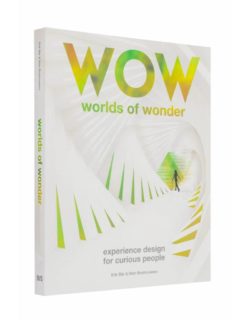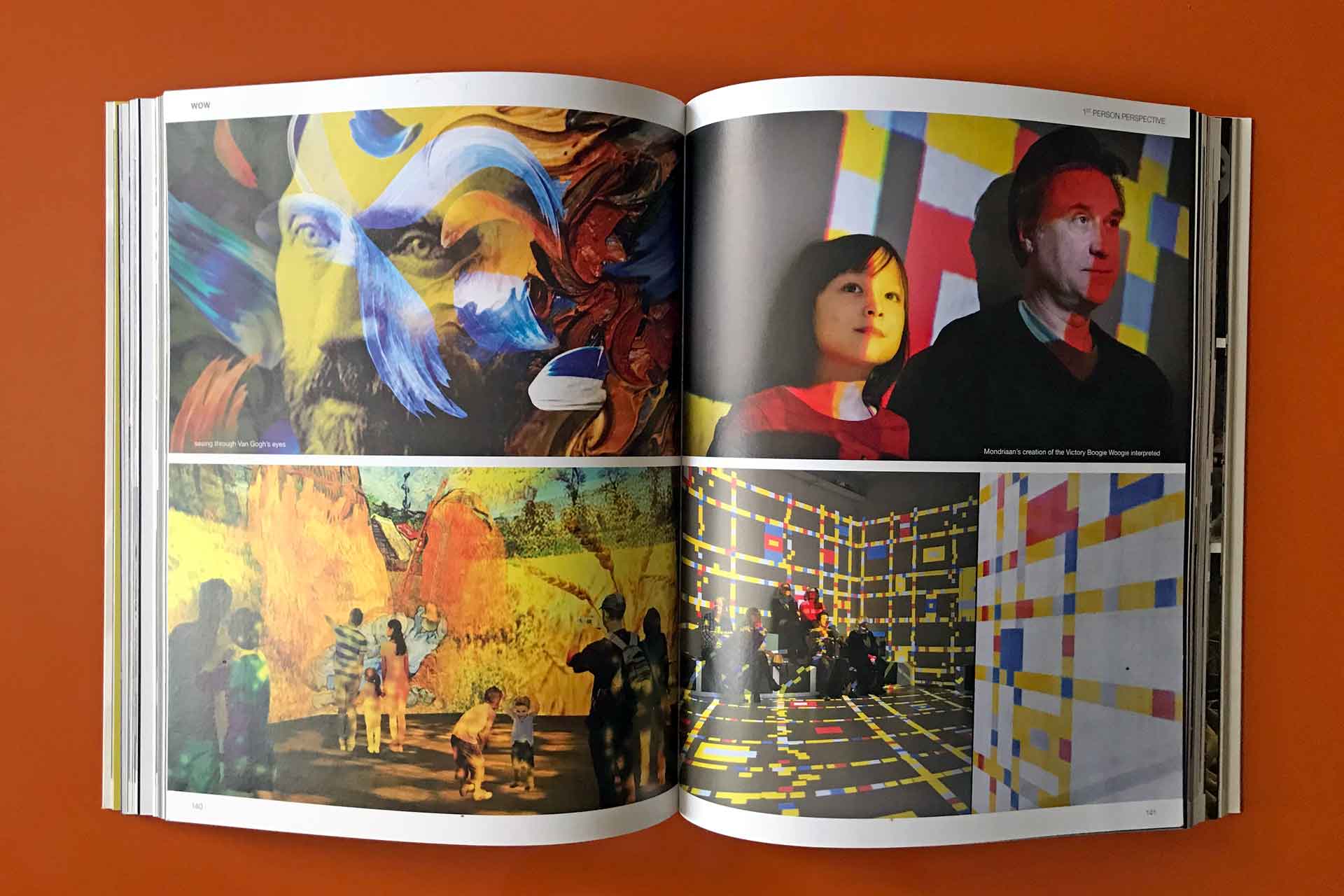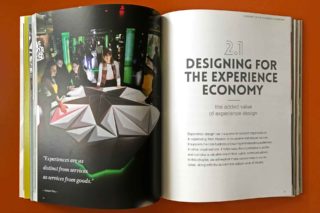Tinker Imagineers’ new book blends monograph and manual in its exploration of the Experience Design process.
As I’ve noted recently, books about multimedia installations are few and far between; slightly less rare are publications about Experience Design. As with most design publications, these are typically divided between monographs, trend surveys, and instructional books.
Worlds of Wonder: Experience Design for Curious People, by Erik Bär and Stan Boshouwer, is hugely ambitious in that it attempts to do all three of these things… and to a certain extent, it works.
The book’s authors are the principals of Tinker Imagineers, a Dutch design firm that has been working in exhibitions and experiences since 1991. Early in the book, their trajectory is described; while students in an AI program at Utrecht University, they stumbled into exhibition design accidentally through a school project, and quickly found themselves in demand as designers of immersive experiences.
While this background is established early, the book does not purport to be a monograph… but the copious photos throughout stem almost completely from TI projects. The images are used primarily as illustration rather than content, and the handful of case studies describe the projects without identifying the book’s authors as their creators. It’s an odd stance – does it make the book more commercial (as the entire concept of Experience Design is illustrated with the authors’ works), or less (since they’re technically uncredited)?
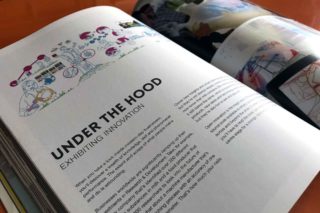 The book is split into four sections. The first of these, WHAT, takes up roughly one-third of the book’s 270 pages. Much of this section is focused on definitions and frameworks, as the authors literally try to establish just what constitutes experience design. Some theory is presented as well: Yuval Noah Harari’s notion of Collective Imagination, Plato’s Theory of Ideas, and, unsurprisingly, Joseph Campbell’s Hero’s Journey. The last pages of this section were the most interesting to me, mapping Campbell’s Journey onto the stages of visitor experience.
The book is split into four sections. The first of these, WHAT, takes up roughly one-third of the book’s 270 pages. Much of this section is focused on definitions and frameworks, as the authors literally try to establish just what constitutes experience design. Some theory is presented as well: Yuval Noah Harari’s notion of Collective Imagination, Plato’s Theory of Ideas, and, unsurprisingly, Joseph Campbell’s Hero’s Journey. The last pages of this section were the most interesting to me, mapping Campbell’s Journey onto the stages of visitor experience.
But for the most part, the writing was steeped in generalities, with only two lightweight case studies to support its arguments. Some of the theoretical concepts were new to me, but in the absence of concrete examples, I’m not sure how applicable they would be to my work.
On another note, I was taken aback that a chapter purporting to be about the origin of the Experience Design field was instead focused on the authors’ firm, and failed to mention the history of the field in theme parks, museums, world’s fairs, and other venues.
The next section, considerably shorter, is titled WHY, and focuses on the value of experiences. It includes extended references to Joseph Pine and James Gilmore’s The Experience Economy, incorporating some of the authors’ email correspondence with Pine verbatim. It also addresses the psychology of why guests enjoy these venues, though this discussion felt a bit like a retread of the previous section.
The WOW section comes next. Much less verbose, this section presents a series of themed photo spreads (of Tinker Imagineers projects, naturally), illustrating a variety of themes, including healing, spirituality, play, and curiosity. The images are great, but by this point in the book, I started to see the same projects represented from multiple angles. It makes one wonder whether the book’s content was written around the firm’s portfolio, and whether there’s an inherent limitation to that approach.
Finally, the HOW section takes up the book’s final third. There’s an impressive density here – a full ten pages are devoted to cost control – as the authors discuss creative process in great detail, without identifying it as their creative process.
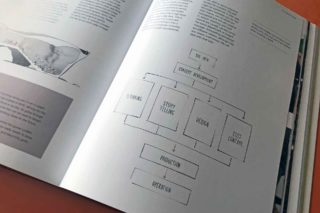 This section reminded me of the kind of boilerplate text one typically has to write when delivering a proposal for a large creative project: this is our team, this is our ideation process, here’s how we manage projects, etc. It’s interesting to see how another firm spells this all out, though the text itself tends to be a bit dry, especially if you’ve read (or had to write) this sort of thing before. And the lack of case studies for these processes makes this more of an academic exercise than one from which the reader can really garner useful insights.
This section reminded me of the kind of boilerplate text one typically has to write when delivering a proposal for a large creative project: this is our team, this is our ideation process, here’s how we manage projects, etc. It’s interesting to see how another firm spells this all out, though the text itself tends to be a bit dry, especially if you’ve read (or had to write) this sort of thing before. And the lack of case studies for these processes makes this more of an academic exercise than one from which the reader can really garner useful insights.
Most disappointingly, for a firm with ‘tinker’ in its name, the process described here is awfully linear. There’s some mention of iteration with regards to design-build value engineering, but otherwise what’s presented here is very much a Waterfall approach. Goals are set, concepts defined, designs drawn, and projects built, in that strict sequence. I would have expected a more agile approach, filled with prototyping and user testing, but I suppose a company nearing its 30th anniversary would inevitably have some creative habits that skew towards the traditional.
Worlds of Wonder is clearly written (thanks to its translator, no doubt), but I might have enjoyed it more with briefer, more pointed text. Without directly referencing real-world projects and processes, the verbiage often gets lost in generalities.
But as a portfolio, it’s fantastic. I try to keep my eye on experiential design firms, but I was unfamiliar with Tinker Imagineers before picking up this book. Their work is gorgeous, rich with storytelling, brilliant media integration, and strong conceptual ideas.
I understand the instinct not to publish a monograph – all the work depicted in the book is presented in more depth on the firm’s website – but some insight into the projects themselves would have made this a really useful manual, for both students and working professionals. As it is, I’m not clear as to what audience the authors are trying to reach… beyond those potential clients who might be swayed by the book’s demonstration of expertise.



